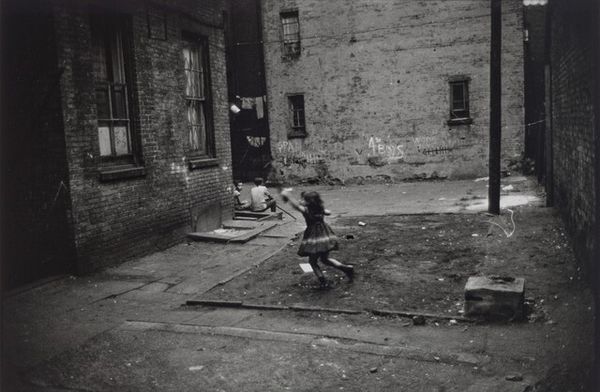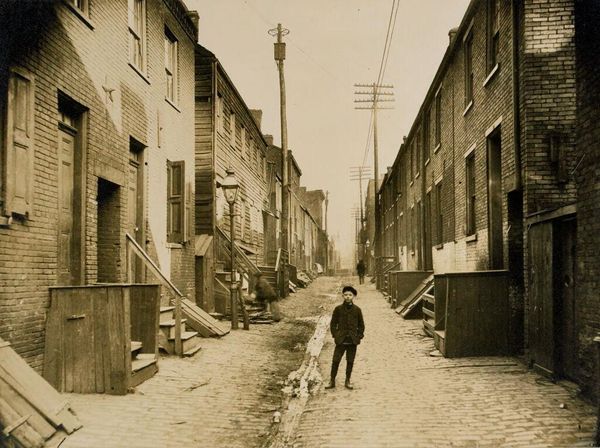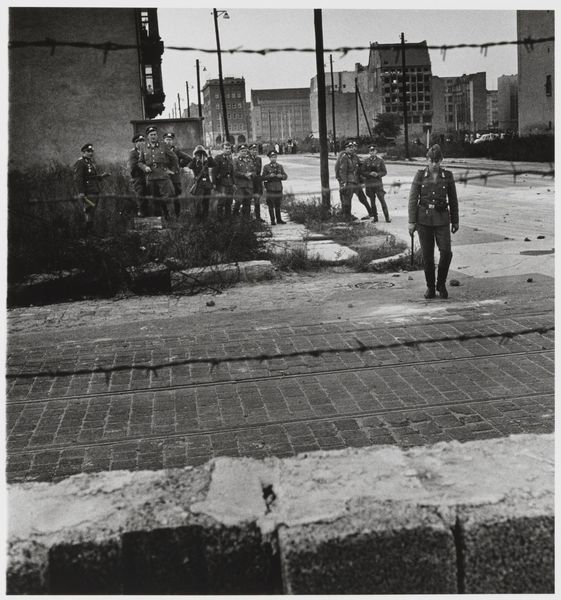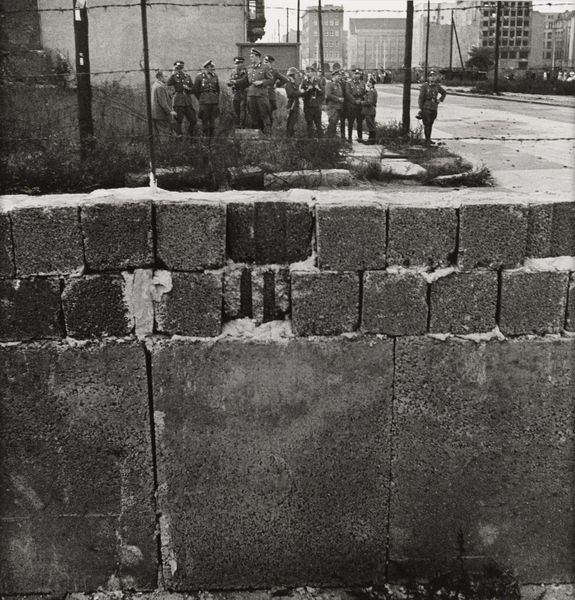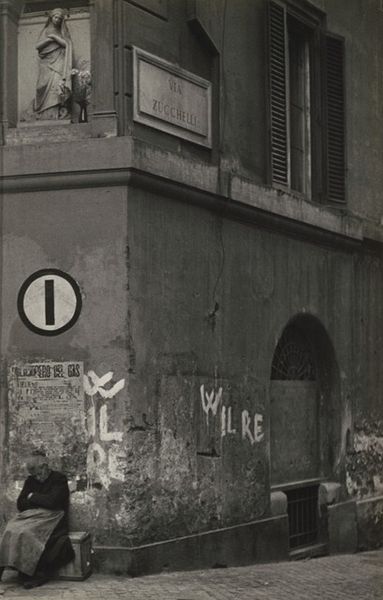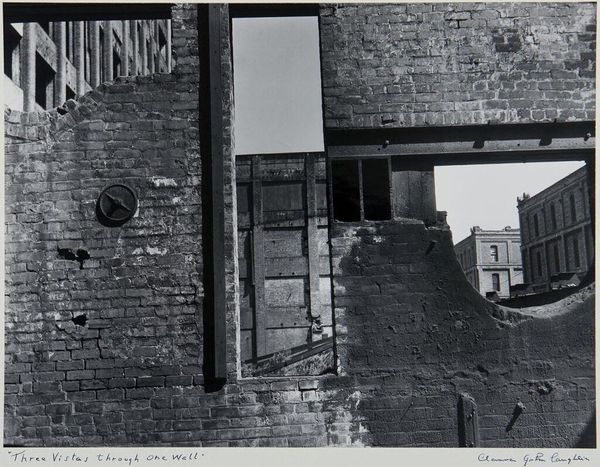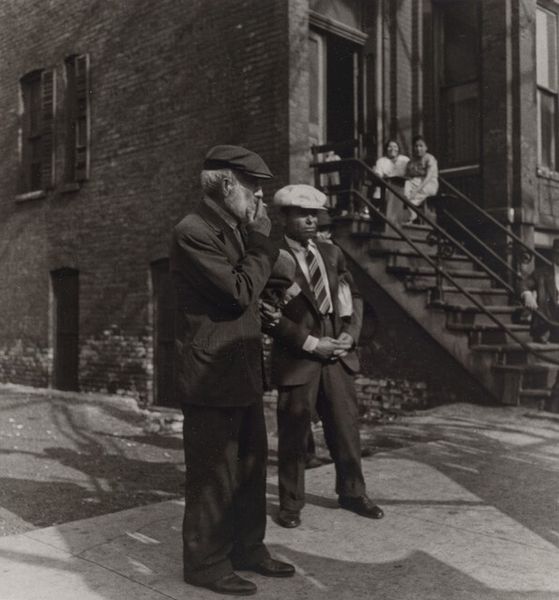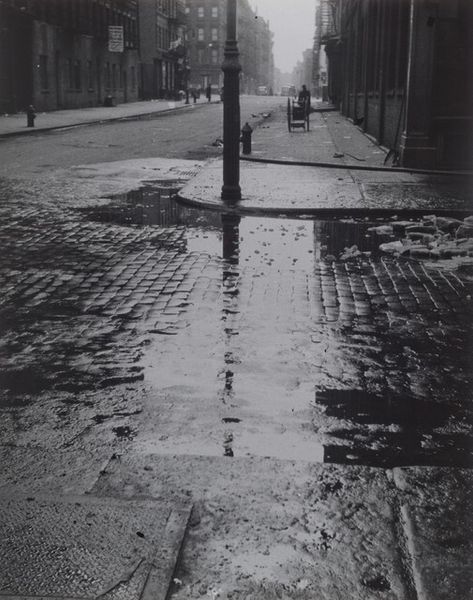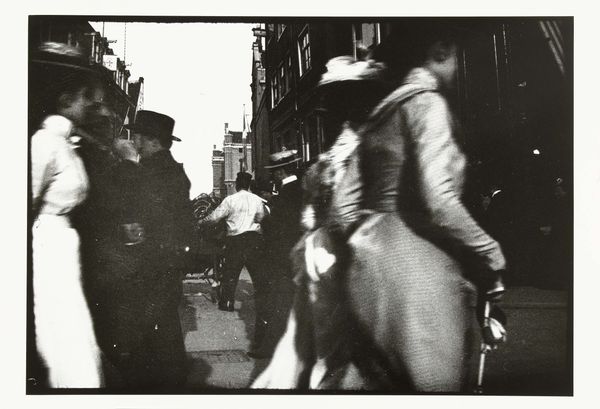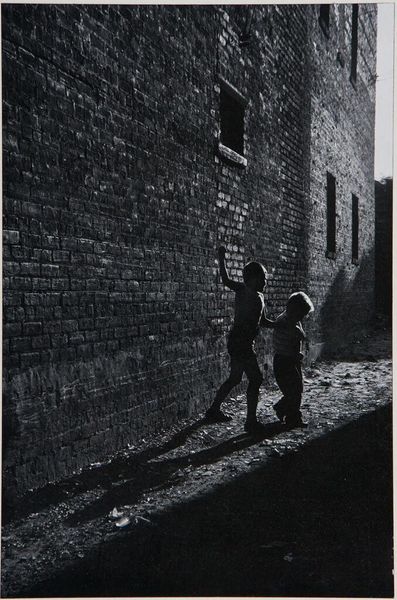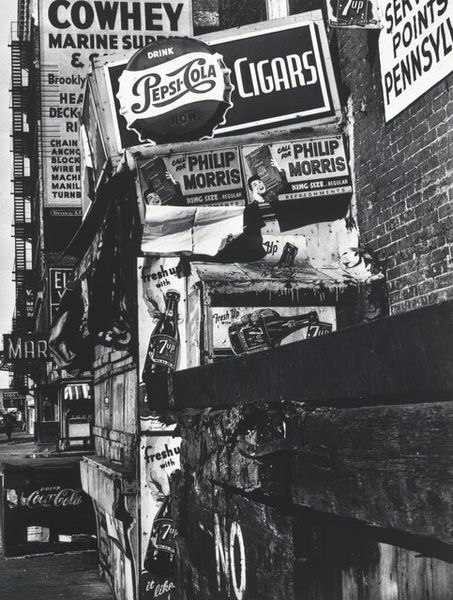
photography
#
black and white photography
#
street-photography
#
photography
#
black and white
#
monochrome photography
#
cityscape
#
genre-painting
#
monochrome
#
monochrome
Dimensions: image: 28.3 × 18.8 cm (11 1/8 × 7 3/8 in.) sheet: 35.4 × 27.7 cm (13 15/16 × 10 7/8 in.)
Copyright: National Gallery of Art: CC0 1.0
Editor: This black and white photograph, titled "Lower East Side, New York City," is attributed to William Carter, possibly taken between 1963 and 2006. There's such starkness here, a story seemingly etched in the brick and grit of the urban landscape. What echoes of memory do you see in this piece? Curator: The eye is drawn into the well of the courtyard, a confined, perhaps forgotten space. It's not merely the physical setting, but the layers of history, both visible and concealed, that fascinate me. Notice the fire escape, the clotheslines; these are not just architectural details. What do they evoke for you? Editor: A sense of confinement, maybe even struggle? The buildings loom so large, and those lines of laundry suggest a communal, almost desperate clinging to normalcy. Curator: Precisely. Consider how these elements form a collective cultural memory, symbols of resilience and shared experience. Even the graffiti on the wall becomes a voice—illegible, perhaps, yet undeniably present, hinting at the narratives unfolding within those walls. How do you interpret the presence of children within that space? Editor: One child seems to be running, a blur of motion, while another stands motionless, almost contemplative. They seem to embody different ways of experiencing this environment, one of escape, the other, perhaps, of observation? Curator: A very perceptive observation. These contrasting images tap into enduring archetypes. The child in motion, an untamed spirit set against a harsh environment. The other child seems almost posed as a static figure, like a watchful sentry. Editor: This has certainly given me a different way to think about urban spaces, not just as physical locations, but as layered stories told through visual cues. Curator: And perhaps to understand how each photograph itself becomes a symbolic marker in our shared, ongoing story.
Comments
No comments
Be the first to comment and join the conversation on the ultimate creative platform.
